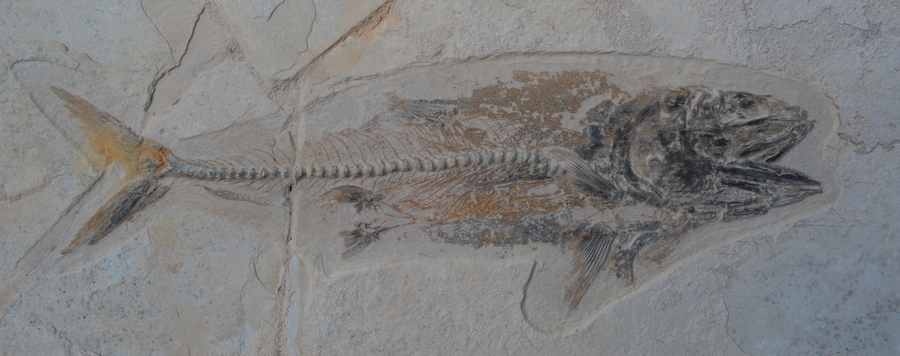
Taphonomy and paleobiology of the Late Cretaceous
Upper Cretaceous (Cenomanian-Santonian) platy limestone deposits in northeastern Mexico contain diverse assemblages of fossil fishes including the pachyrhizodont Goulmimichthys roberti. A review of 177 individuals from new localities in the Múzquiz area of northern Coahuila and from Vallecillo (early-middle Turonian) of Nuevo León reveals an unimodal size distribution of the taxon and dominance of 250 to 450 mm long individuals at Vallecillo, while smaller (younger) and larger-sized specimens are markedly rare. Size distribution is similar in the Múzquiz localities. The taxon thus migrated into pelagic environments (e.g. Vallecillo) when maturity was reached. Carcass flotation is excluded for the material due to the abundance of complete and articulated specimens. The taphonomical decay analysis of G. roberti allows for a differentiation of four preservational stages and evidences environmental differences between Vallecillo and the Múzquiz area. Goulmimichthys roberti occupied a wider stratigraphic range and ecosystem variety than previously known, including both pelagic and shallow shelf settings.





